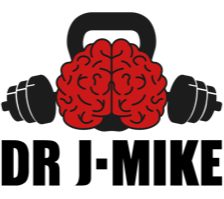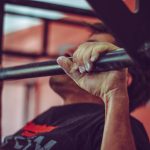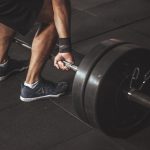Truth about back work for increased performance
Introduction
When it comes to training for strength and hypertrophy, back thickness reigns supreme. You will not find anybody who is strong across-the-board with any type of sport without having a strong back that is thick like the great wall of China. There are numerous ways to fully develop and train the back through a whole host of exercises and angles to maximize your physique. So, let’s get to it and talk about what you can do to train large slabs!
Big Back, Big Gains
It’s helpful at first to distinguish between back thickness and back width. With respect to back width, the lats are the main muscles responsible here where the fibers run upward with it insertion into the humerus. Back thickness also corresponds to the smaller yet equally powerful muscles with the rhomboids, traps, teres major and posterior adults. The lats function to adduct, extend and internally rotate the arm. It also connects the thoracolumbar fascia to the humerus, as inhibition of the latissimus dorsi can cause compensations in the neck, shoulder, elbow, lower back, and gait.
From a function standpoint, the lats provide a large safety shelf during heavy squatting to support the weight upright. It also provides a large portion of stability when deadlifting as large functional lats help prevent the bar from deviating outward upon lifting off the floor to mid range and to lockout.
For the lats, it is best to utilize compound movements that combine these actions. Staples such as T-Bar rows, Pull-Ups, and Straight Arm Pullovers, Seated Rows have had a place in every training arsenal since day one, and for good reason. When training the lats, it is crucial to build a connection with the working muscle.
Lets talk about what you can do to generate large slabs and a big back to increase your performance. I won’t get into the specifics of each individual action, but rather provide some key points to keep in mind that will engage the lats to a greater degree vs. “going through the motions”. Here are some helpful exercises and tips that have worked extremely well to improve the targeting and activation of the back muscles.

Photo by Scott Webb from Pexels
The Lats
Keep in mind, when discussing rows of any variation, understand that depending on how it’s executed, it can actually become a more lat dominant exercise vs. simple an upper back movement. Many back machine and dumbbell exercise can be utilized to bias the lats more than the upper back if that is the overall goal, which should be in most cases.
Landmine Trap Bar Rows
Key Point #1: Initiate pulls with your Lats, NOT your Biceps.
As you can see, I am initiating the movement with my lats first. That means ZERO elbow flexion until you literally cannot contract your lats any further. See the video on proper row execution where I implement this tip. This is more of a “feel” compared a simple visualization.
Key Point #2: Tuck your scaps into your back pockets
For example, using the cue left scap/elbow into right back pocket. This simple pointer introduces both scapular retraction AND depression, which creates the tension created by the shoulder extension and adduction components of all pulling and rowing movements.
Pulldowns
While traditional pulldowns target the lats as well, the specific way you do them can create large tension within the musculature. Specifically, utilizing specific handles via a narrow, or neutral grip will dictate these outcomes. You can tell a slight difference where I pull slightly more wide vs. down to get more lat or upper back involved.
Key Points:
1). Start with the arms in front of the body rather than out to the sides and use a narrow or shoulder-width grip.
2). Lengthen the lats while maintaining tension. Don’t lose tension in the fully lengthened position.
3). Drive the arms down to initiate the concentric without allowing the elbows to flare.
4). Make your arm path come in close to the body and drive the elbow toward the hip.
The Rhomboids and Trapezius
Rhomboids are an important scapular retractor and starts in the dorsal scapular nerve in the brachial plexus and passes through the scalenes and into the traps. The rhomboids work collectively with the levator scapulae muscles to elevate the medial border of the scapula, downwardly rotating the scapula with respect to the glenohumeral joint. It also rotates the scapula and retracts it towards the spinal column. If you look at the middle trap, middle and lower traps are often weakened from overdominance of the pec minor, leading to poor mobility in the shoulder and instability of the scapulothoracic region.
The middle trapezius fibers are inhibited and excessively lengthened in those with upper crossed syndrome. This puts constant pulling force on the middle traps which causes them to become chronically lengthened and inhibited over time, decreasing scapular motion, leading to improper technique on rowing, and pressing movements and poor mid-back development. By strengthening the middle and lower trapezius, release and stretch the pecs and lats, and stay more upright during movement and let your scapula and traps have proper position against the ribs. In other words, let your mid traps and rhomboids do the majority of the job.
Key Point #1: Squeeze your shoulder blades together.
When training the rhomboids and middle traps, begin every set by squeezing your shoulder blades together as closely as possible. You should then focus protracting them on the eccentric portion of the movement.
Key Point #2: Drive your shoulder blades down by arching.
When targeting the lower traps, utilize scapular depression by accentuating your lumbar arch during rowing and vertical pulling movements. As previously mentioned, the same concepts also applies the lats (mentioned above).
Try these exercises below for better Rhomboids and Trap activation:
Rear Delts
The posterior deltoid, also known as rear delts are an integral part of the overall shoulder complex that can often be overlooked in favor of more anterior and lateral compartments of the shoulder.
The posterior fibers assist the latissimus dorsi to extend the shoulder. Other muscles that assist in extension are the infraspinatus and teres minor. They work in tandem with the posterior deltoid as external (lateral) rotators, antagonists to strong internal rotators like the pecs and lats. Unfortunately, some muscle imbalances in the shoulder complex can arise due to lack of poor rear delt strength. This can cause rotator cuff problems, leading to incorrect compensation during pressing exercises like bench press over overhead press, which can eventually pull your shoulders forward into more “caveman posture.”
By adding a few rear deltoid exercises to your shoulder workout, you can add muscle to your posterior deltoid and build well-rounded shoulder strength.
Use some of these exercises that provide rear deltoid growth!
I hope these exercises and movements help you obtain better back development. These are a true staple in strength and hypertrophy programs.
You can never go wrong with a strong-ass back!





